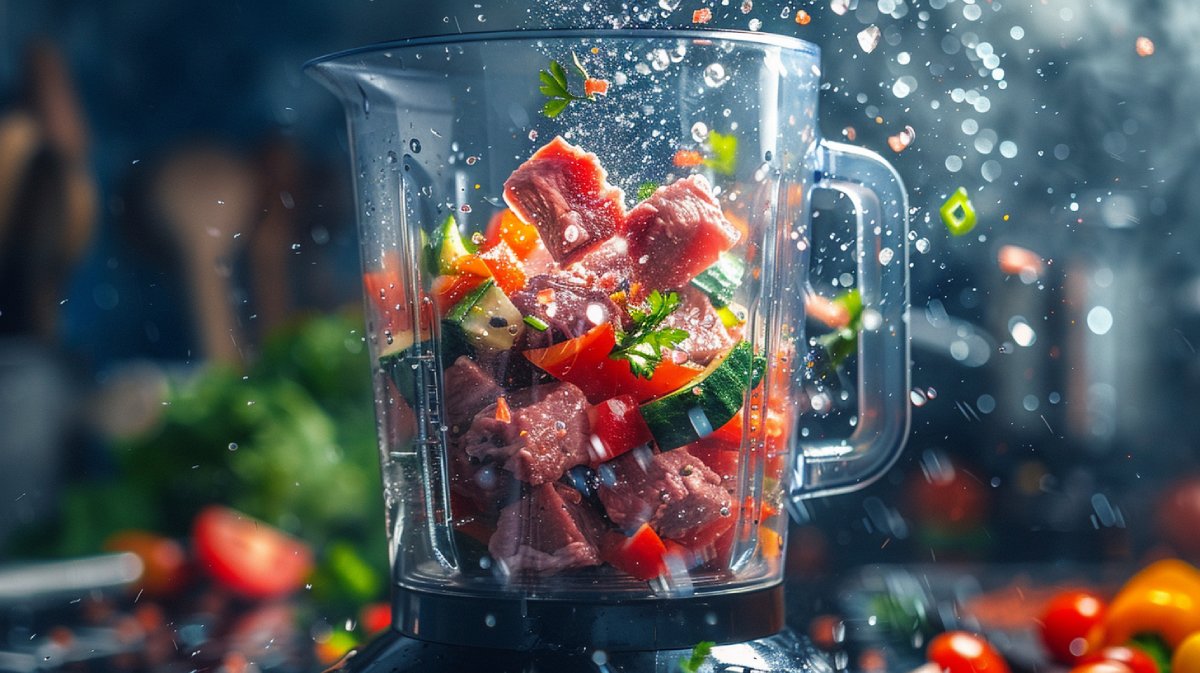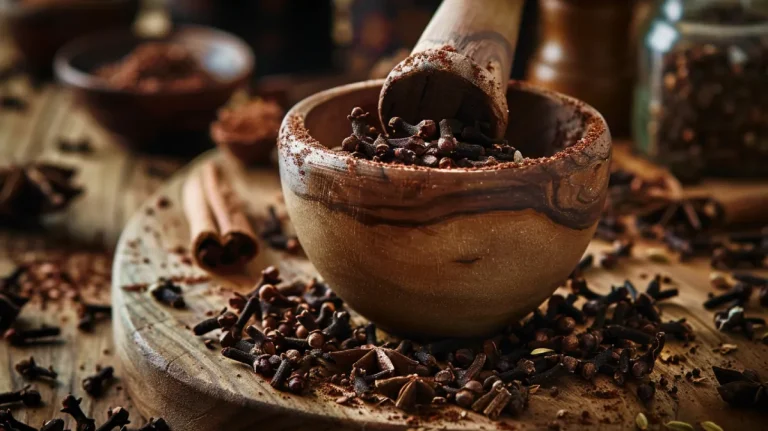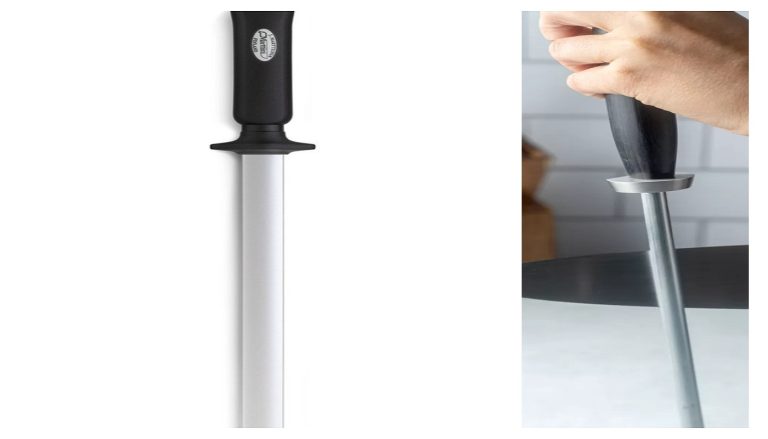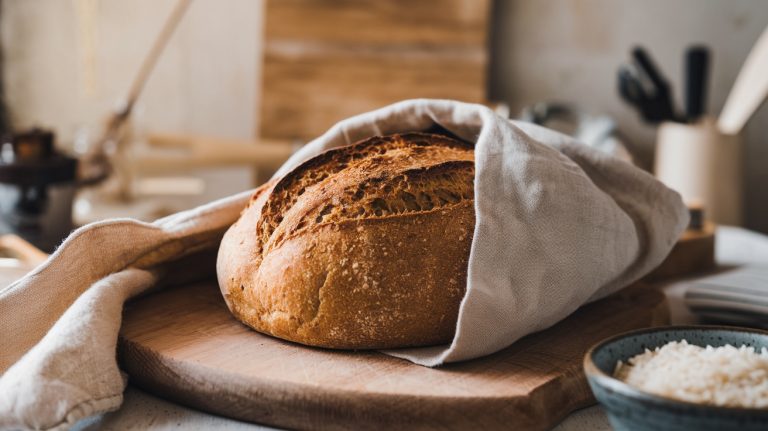Can a Blender Puree Meat: Techniques and Tips
Yes, a high-powered blender can easily puree meat into a smooth texture, perfect for those who need easier-to-eat meals. Choose tender cuts of cooked meat, and chop them into small pieces for best results. Adding a bit of broth or water helps achieve that velvety consistency.
Remember to chill your cooked meat beforehand for enhanced flavor. Some blenders may struggle with this task, so opt for models with 1000+ watts or consider using a food processor for denser textures. Stick around, and you’ll discover more tips for perfect purees and blending techniques.
Key Takeaways
- A high-powered blender (1000+ watts) can effectively puree meat to achieve a smooth texture.
- Tender cuts of cooked meat, like boneless chicken or top sirloin, are ideal for pureeing.
- Adding liquid, such as broth or water, helps break down meat fibers for a velvety finish.
- Chilling cooked meat before blending enhances texture and flavor during the pureeing process.
The Puree Process
Understanding puree starts with recognizing that it’s all about transforming cooked or chilled meat into a smooth, silky texture, making it easier for those with chewing difficulties to enjoy their meals.
Pureed food is essential for individuals who may struggle with traditional textures, like toddlers or the elderly. The process begins with selecting tender cuts of meat, ensuring they’re cooked thoroughly to safe internal temperatures.
Once the meat is ready, you’ll need a powerful blender or food processor to achieve that desired consistency. Adding a suitable liquid, such as broth or water, is vital; a good rule of thumb is about 1/4 cup per cup of meat.
This liquid helps to break down the dense fibers, preventing clumping and ensuring a velvety finish.
Blender Capabilities
When you’re looking to puree meat, the power of your blender matters more than you might think.
High-wattage models, like those from Vitamix or Breville, can handle this task with ease, while immersion blenders may leave you with a less-than-satisfactory texture.
Understanding the best types of blenders for the job will guarantee you achieve the smooth results you desire.
Blender Power Requirements
To effectively puree meat, you need a blender with at least 1000 watts of power, as this wattage guarantees it can tackle dense textures with ease. A higher wattage translates to better blending efficiency, making it ideal for creating smooth meat purees.
Here’s a quick comparison of different blender wattages:
| Wattage Range | Performance Level | Best Use |
|---|---|---|
| 200-500 watts | Struggles with meat | Softer foods, smoothies |
| 600-800 watts | Moderate performance | Light purees, soft meats |
| 1000+ watts | High performance | Efficient meat pureeing |
Using a blender with lower wattage, around 200-500 watts, means you’ll likely face challenges when trying to puree meat. Meanwhile, those high-performance blenders, like the Vitamix, excel at creating smooth, consistent textures. Remember, for the best results, always cook and chop your meat into smaller pieces before blending. This preparation helps guarantee your blender can effectively puree meat without straining its motor or blades. Your choice of blender power is vital to achieving that perfect, velvety meat puree you desire.
Best Blender Types
Choosing the right type of blender can greatly impact your ability to puree meat effectively, as each model offers unique capabilities tailored to different blending tasks.
High-powered blenders, like the Vitamix or KitchenAid Pro Line Series, excel at creating a smooth texture with minimal effort. These blenders often come with dedicated puree settings, enhancing the speed and blending time specifically for achieving a silky consistency in your meat purees.
However, when it comes to processing denser textures, food processors typically outperform blenders. Designed for tougher jobs, food processors can achieve a finer consistency, making them a better choice for pureeing meat if you’re aiming for a perfect texture.
For best results with any blender, chop your meat into smaller pieces and add liquid—like broth or water—to facilitate smoother pureeing.
Just keep in mind that lower wattage blenders, such as the Nutribullet, often disappoint users when tackling meat. They struggle to liquefy dense food items effectively, leading to frustration in your cooking endeavors.
Best Foods for Pureeing
When you’re looking to puree foods, choosing the right meats makes all the difference.
Tender cuts like chicken and beef, combined with the right cooking techniques, create a smooth texture that’s easy to enjoy.
Plus, blending in some veggies not only boosts nutrition but also elevates the flavors in your dishes.
Ideal Meat Choices
Tender cuts of meat, like boneless chicken and top sirloin beef, are your best bets for creating smooth and flavorful purees that blend effortlessly. These cuts have a fine texture that makes them ideal meat choices for pureeing, ensuring you achieve a creamy consistency without any lumps.
When preparing these meats, consider cooking methods like slow cooking or boiling, as they help retain moisture. This moisture is essential for that velvety feel you want in your puree.
If you’re looking for convenience, ground meats like turkey or chicken can also be pureed with ease due to their already fine texture. You can elevate your meat purees by adding a splash of sodium-free broth or reserved cooking liquid, enhancing both texture and flavor.
To boost nutrition and flavor, don’t hesitate to mix pureed meat with cooked vegetables, such as carrots or peas. This combination not only enriches the puree but also adds a delightful taste, making each bite satisfying.
Cooking Techniques Overview
Mastering the art of pureeing meat involves understanding the best cooking techniques and food selections that yield the smoothest and most flavorful results.
To start, always choose cooked meats like chicken or beef that are tenderized and chopped into 1-inch pieces. This step is essential for achieving a silky consistency in your puree.
When you’re ready to blend, add a liquid—broth or water works perfectly—at a ratio of 1/4 cup per cup of meat. This addition not only aids in the blending process but also enhances the overall texture.
For ideal results, use fresh or chilled cooked meat to maintain digestibility and avoid foodborne illnesses.
Don’t forget to incorporate vegetables like cooked carrots or peas into your mix. They not only boost the nutritional value of a pureed diet but also enrich the flavor profile.
Nutritional Benefits Explained
Pureeing meat not only enhances meal textures for those with dietary restrictions but also packs essential nutrients, making it a valuable addition to any diet. If you’re caring for someone with chewing difficulties or on a soft food diet, pureed meat offers a smooth, easily digestible texture that transforms their meal experience.
When it comes to introducing pureed meat to babies, consider its importance in providing heme iron, vital for their development. Since breast milk is low in iron, incorporating tender cuts like boneless chicken or top sirloin can guarantee a delightful blend of flavor and nutrition.
Moreover, don’t forget to mix in some vegetables while pureeing. This not only boosts the nutritional profile of the meal but also delivers essential vitamins and minerals alongside protein. Freshly pureed meat stands as a healthier alternative to processed options, allowing you to control the ingredients and maintain higher nutritional quality.
Steps to Puree Meat
To start, choose high-quality cuts of meat and cook them thoroughly to safe internal temperatures. Then chill them for at least 2 hours to enhance their texture and flavor before blending.
Once chilled, chop the meat into 1-inch pieces. This step makes processing in your blender or food processor much easier.
Next, add the chopped meat to your blender. For a smooth puree, blend the meat until it reaches a powdery consistency, adding about 1/4 cup of liquid—like broth or water—per cup of meat. Keep blending until the mixture resembles a fine, sand-like texture. If you notice any lumps, adjust the amount of liquid as needed to guarantee a velvety puree.
Don’t hesitate to get creative! You can experiment by combining pureed meat with cooked vegetables to boost nutritional value and flavor. This not only caters to various dietary preferences but also enhances the overall taste of your puree.
Following these steps will help you achieve the perfect meat puree every time, making meal preparation easier and more enjoyable.
Importance of Pureeing Meat
Creating a smooth puree from meat not only enhances the dining experience for those with special dietary needs but also guarantees they receive essential nutrients in a palatable form. For individuals on soft food diets, like infants or those with chewing difficulties, a silky consistency makes meals easier to consume and more enjoyable.
When you puree fresh meat at home, you assure better nutrition compared to processed options, as homemade versions can be tailored to avoid additives and incorporate wholesome ingredients.
Additionally, pureeing meat is a cost-effective solution for feeding pets or strays, allowing you to mix it with rice and serve multiple animals efficiently. This method also maximizes the nutritional benefits of meat, such as heme iron, which is vital for infant development.
However, it’s wise to consult a pediatrician before introducing pureed meat to infants, making sure that it’s done at the right developmental stage.
Nutritional Benefits
When you puree meat, you’re revealing a treasure trove of essential nutrients that support growth and development.
Packed with high-quality protein and bioavailable heme iron, pureed meat can be a game changer for infants and those on soft food diets.
Plus, blending meat with veggies or sauces not only enhances its nutritional profile but also caters to specific dietary needs, ensuring everyone gets the nourishment they require.
Essential Nutrients for Growth
Pureed meat offers essential nutrients that support growth and development, making it a valuable addition to your baby’s diet as they shift to solid foods.
Pureeing meat not only makes it easier for infants to consume but also guarantees they receive indispensable nutrients necessary for their growing bodies.
Consider the following benefits of including pureed meat in your baby’s meals:
- High-quality Protein: Pureed meat provides essential amino acids that support muscle development and overall health.
- Bioavailable Iron: The heme iron from pureed meat is vital for infants, as it’s more easily absorbed than iron from plant sources.
As your baby approaches six months, their nutritional needs increase considerably.
Introducing pureed meat can help meet these needs, guaranteeing they get the right balance of nutrients to thrive.
Iron and Protein Sources
Including iron and protein sources like pureed meat in your baby’s diet not only enhances their nutritional intake but also supports their growth and development during this critical stage.
Pureed meat, particularly beef, is a fantastic source of heme iron, which is more easily absorbed by the body than the non-heme iron found in plant foods. This makes it especially important for infants who are starting to shift from breast milk, as breast milk is low in iron.
A mere 3-ounce serving of pureed beef packs about 22 grams of protein, contributing greatly to your baby’s daily protein needs. This protein is essential for muscle development and overall health. As your baby grows, incorporating pureed meats will help meet dietary protein recommendations, aiding in their development.
Moreover, pureed meats add nutritional diversity to your baby’s meals, providing not just iron and protein, but also crucial nutrients like zinc and B vitamins. These support immune function and energy metabolism, ensuring your little one has what they need to thrive.
Dietary Adaptations for Needs
Adapting your baby’s diet to include pureed meat can greatly enhance their nutritional intake, providing essential nutrients that support growth and development during their shift to solid foods.
Pureeing meat allows you to introduce important heme iron, which is critical for your child’s development, especially since breast milk has low iron levels.
Here are some benefits of pureeing meat for your little one:
- Smooth Texture: Perfect for babies who may have chewing difficulties, guaranteeing they still get their protein without the struggle.
- Nutritional Control: Homemade pureed meat gives you the power to choose the ingredients, fostering healthier eating habits compared to processed options.
It’s always best to introduce pureed meat under the guidance of a pediatrician or Registered Dietitian.
They can help guarantee nutritional adequacy and cater to any specific dietary needs.
Alternative Blending Solutions
If you’re seeking alternatives to traditional blenders for pureeing meat, consider options like food processors and dedicated meat grinders that can deliver superior results.
Food processors excel in achieving a smooth consistency thanks to their design and functionality, making them ideal for pureeing larger batches of meat. On the other hand, dedicated meat grinders are tailored for mincing meat, ensuring a more consistent texture than a standard blender can provide.
Here are a few alternative blending solutions to keep in mind:
- Stick Blenders: These are versatile for pureeing meat directly in pots or bowls, though they might struggle with denser cuts.
- High-Powered Blenders: Models like Vitamix can handle the density of meat effectively, offering smoother results for your recipes.
When using a blender for meat, remember that adding liquid is essential for achieving the desired smooth consistency.
Frequently Asked Questions
Can Meat Be Pureed?
Yes, you can puree meat! Just chop it into small pieces, add some liquid, and blend it well. This makes meals easier to eat, especially for those with chewing difficulties or soft food requirements.
Can I Puree Food in a Blender?
Yes, you can absolutely puree food in a blender! Just chop your ingredients into smaller pieces, add some liquid to help, and blend until you achieve that smooth, creamy consistency you’re aiming for. Enjoy!
How to Puree Meat Without a Food Processor?
When tackling the task of pureeing meat without a food processor, you’ll want to guarantee it’s tender and chopped small. Adding liquid helps achieve a silky smooth texture, blending in small batches for perfection.
What Blender Can Blend Meat?
If you want to blend meat effectively, choose a high-powered blender like Vitamix or Breville Kinetix. Ascertain it has at least 1000 watts and remember to add liquid for a smooth, consistent texture.
From Prep to Plate: Simplify Meals with Pureed Meat
So, can a blender really puree meat?
Absolutely! With the right technique and a powerful blender, you can achieve a smooth, velvety texture that’s perfect for various dishes.
This method not only simplifies meal prep but also opens up a world of culinary creativity. As you experiment, you’ll discover how versatile pureed meats can be, transforming your meals while ensuring nutritional needs are met.
So grab that blender and start exploring the delicious possibilities.







